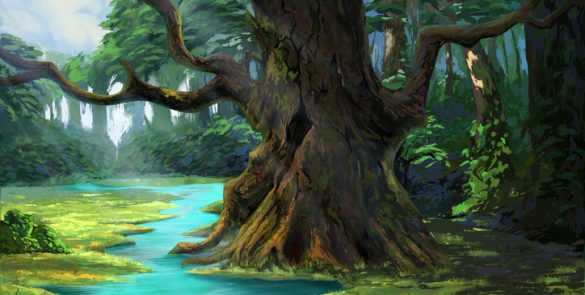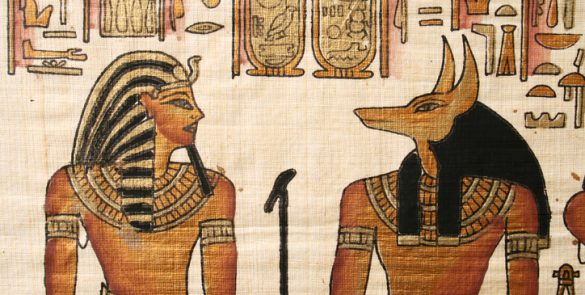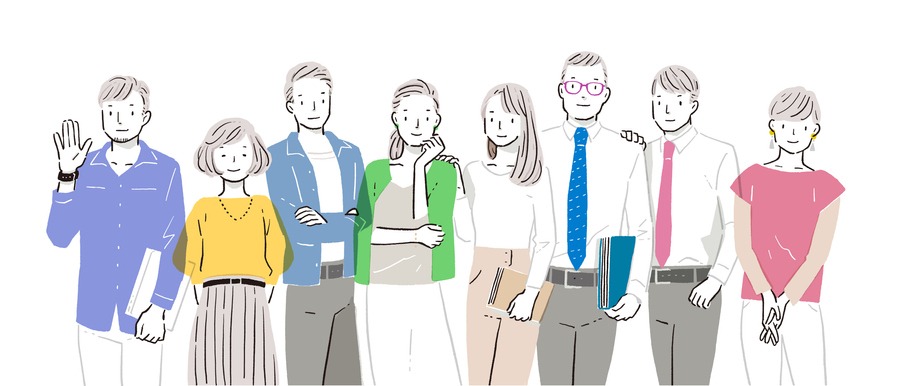World Mythologies Lesson Plan
מערכי השיעור שלנו מאגדים את מיטב התוכן הלימודי מאת הצוות המקצועי שלנו. בכל מערך שיעור מצוין לאילו כיתות הוא מיועד, כך שתוכלו לזהות את התכנים המתאימים עבור התלמידים שלכם.
מערכי השיעור האלה מתמקדים בנושאים שונים, כגון: טיולים, שירה אנגלית, או השאלה אם יש חיים מחוץ לכדור הארץ. באמצעות מערכי השיעור של מורפיקסקול התלמידים יוכלו ללמוד על כל אחד מהנושאים האלה ועוד בעזרת משחקים וחידונים הנכללים במערכת הלימוד של מורפיקסקול.
מערכי השיעור החווייתיים שלנו כוללים אמצעי למידה כגון: משחקי אוצר מילים של מורפיקסקול, טקסטים של הבנת הנקרא (אנסינים), רעיונות לדיונים בכיתה וחידונים מעשירים. בכל מערך שיעור יש תוכן ייחודי משלו, אז יש הרבה מה לגלות והרבה במה להתנסות.
למערך שיעור אחר 1 הייטק
למערך שיעור אחר 2 זכויות נשים
למערך שיעור אחר 3 חייזרים
להלן מערך שיעור אנגלית על מיתולוגיות עתיקות – מתאים לתלמידי תיכון ברמת 4 ו-5 יחידות בגרות.
- נחפש מידע על המיתולוגיה היוונית ונציג את מה שמצאנו.
- נעבוד עם אנסין מאתגר על המיתולוגיה הנורדית.
- נענה על חידון שיתמקד במיתולוגיה המצרית.
- נסגור עם דיון מסכם על הנושא וננסה להסיק מסקנות בעקבות מה שלמדנו.
Part 1
מחקר בעקבות מיתולוגיה יוונית - Researching Greek Mythology
נתחיל את השיעור שלנו עם קצת מחקר באינטרנט. לפניכם רשימה של אלים יוונים: זאוס, פוסידון, הרה, דמטר, ארטמיס, הרמס, דיוניסוס, הסטיה, האדס, אתנה, אפולון, הפייסטוס, אפרודיטה, הקטה, אסקלפיוס, אריס, פאן.
בחרו באחד מהם וכתבו עליו באנגלית חיבור קצר בסדר גודל של 100 מילים. יש להיעזר באינטרנט. התלמידים יתחלקו לזוגות ולאחר שיסיימו לכתוב את החיבורים שלהם, יבדקו אחד לשני את החיבורים וינסו למצוא טעויות ושגיאות כתיב.
Part 2
Reading Comprehension - קטע אנסין על יגדראסיל, עץ העולם
Yggdrasil, the World Tree

Yggdrasil, in Norse mythology, is the name of a mythological ash tree, also known as the “World Tree”. The name Yggdrasil itself apparently means “the horse of Yggr,” Yggr (literally ‘Terrible One’) being one of the names of the god Odin. This giant, nurturing tree supported all the nine realms of the Norse universe, branching out over the entire world and up into heaven. Yggdrasil is described as the holy place of the gods, where they met each day as silver drops of dew trickled over the trees leaves.
Many mythic animals were associated with Yggdrasil. A wise eagle sat in the topmost branches, surveying the whole world. A hawk, Vedurfolnir, sat between the eagle’s eyes. Four deer, named Dain, Dvalin, Duneyr, and Durathror, continually ate the tree’s leaves and nibbled at its bark, while the goat Heidrun, whose mead-milk was drunk by Odin’s warriors in Valhalla, also fed on its leaves. Many creatures, especially a cruel and frightening dragon named Nidhogg (meaning “dreaded biter”), ate away at Yggdrasil’s roots from below. A squirrel named Ratatosk (meaning “Travel Tusk”) climbed up and down the tree trunk delivering spiteful insults between the eagle at the top and Nidhogg at the bottom. Bees fed on the honeydew that dripped from the tree, and the first two swans that ever existed swam in the water near the root that emerged in Asgard, the land of the gods.
Yggdrasil had three roots, each of which was associated with a body of water. The deepest root descended all the way to Niflheim, the realm of death, one of the nine realms of the Norse universe. It was there that the dragon Nidhogg lay, in a well that was the source of all the rivers in the world. Another root ended in Jotunheim, home of the frost giants. Beneath this root was the fountain of knowledge, prophecy, and poetry, and its guardian was Mimir, the personification of wisdom. When the most powerful god, the war god Odin, came and asked Mimir for a single drink from the well, Odin had to give one of his eyes in payment. He accepted the price, and after he drank, he was suddenly so wise that he also became the god of seers, poets, and sorcerers.
Under the third root, the one in Asgard, the heavenly home of the gods, was another important well, called the Well of Fate or Weird’s Well. The water from this well was so sacred that anything it touched turned as white as the inside of an eggshell. It was at this well that the gods met, riding to it each day over Bifrost, the bridge that linked Earth and heaven. Near the well was a great hall, home of the three Norns, or fates—Urd (past), Verdande (present) and Skuld (future) — who ruled over the destinies of mortals and gods alike.
Despite the constant loss of its leaves, the rotting of its trunk, and the chewing away of its root by the great dragon Nidhogg, Yggdrasil always remained alive and green because every day the Norns drew water from the well and sprinkled it over the tree. They also applied healing clay from the well onto the tree trunk in the places in which it had rotted and been eaten away by the deer; this kept the tree’s limbs from withering.
According to tradition, the trembling of the World Tree would signal the beginning of the end of the world, Ragnarok, and the great final battle between the gods and the giants. Yggdrasil would remain standing after Ragnarok, according to one story, and two humans would emerge from the tree and repopulate the world.
Adapted from “Yggdrasil”, Britannica, Encyclopædia Britannica. 20 Feb. 2022. kids.britannica.com/students/article/Yggdrasil/314289
בחר בתשובות הנכונות על פי קטע האנסין שקראת:
4.How does Yggdrasil remain alive and green despite constant damage?
a) The Norns take healing clay from the well use it to heal the tree
b) The deer nibble at its leaves and bark to keep it alive
c) The dragon Nidhogg eats away at its roots and prevents them from hurting the tree
d) Mimir heals the tree every year
5.According to tradition, what would the trembling of Yggdrasil signal?
a) The beginning of the end of the world, Ragnarok
b) The arrival of the Norns
c) The victory of the gods over the giants
d) The emergence of two humans from the tree
6.Who are the main enemies of the gods?
The soldiers of Ragnarok
The giants
The animals who hurt Yggdrasil
The gods have no enemies
1.What is Yggdrasil in Norse mythology?
a) A wise eagle
b) A mythological ash tree
c) A god of seers and sorcerers
d) The fountain of knowledge
2.What is the name of the dragon that eats away at Yggdrasil's roots?
a) Dain
b) Vedurfolnir
c) Nidhogg
d) Heidrun
3.Who guards the fountain of knowledge, prophecy, and poetry associated with the second root of Yggdrasil?
a) The Norns
b) The frost giants
c) The god Odin
d) Mimir
Part 3
Ancient Egyptian Mythology Quiz - חידון על מיתולוגיה מצרית עתיקה

לפניכם 8 משפטים שמציגים מידע על המיתולוגיה המצרית. בחרו את המילה הנרדפת המתאימה שיכולה להחליף את המילה המודגשת בכל משפט:
5.According to ancient Egyptian mythology, the god Anubis is responsible for inventing the process of ‘mummification’.
a) procedure
b) philosophy
c) task
d) belief
6.Ancient Egyptian art sometimes represents kings by showing them with the body of an animal, but with a human head – the opposite of how the gods were shown.
a) primary
b) reverse
c) objective
d) intent
7.Sometimes Thoth, the god of the moon, wisdom and hieroglyphs, is shown with the head of a baboon.
a) always
b) seldom
c) occasionally
d) exquisitely
8.According to Egyptian mythology, Anubis weighed the hearts of the deceased against a feather to determine if they were worthy of entering the afterlife.
a) living
b) sleeping
c) departed
d) beloved
1.Some of the main gods of Ancient Egypt are Horus, Ra, Osiris and Set.
a) central
b) deep
c) only
d) available
2.Egyptian gods were usually depicted with the heads of animals – crocodiles, cats, birds, etc.
a) imagined
b) forced
c) shown
d) worked
3.Osiris was the Egyptian god of the underworld – the place ancient Egyptians believed they go when they die.
a) angel
b) deity
c) priest
b) demon
4.Ancient Egyptians worshipped cats and even crocodiles.
a) preferred
b) perceived
c) projected
d) revered
Part 4
Class Discussion - דיון כיתתי
לסיכום השיעור על מיתולוגיות שונות בעולם, לפניכם מספר שאלות לדיון כיתתי:
- What is mythology?
- What’s the difference between a mythology and a religion?
- What are some similarities between different mythologies from around the world?
- How do mythologies affect our present day? Name a few examples.
- Do you have a favorite mythology? Explain your choice.
לטובת תרגול נוסף, אפשר לבקר באזור הבנת הנקרא שלנו ולנסות את האנסין על תור, אל מהמיתולוגיה הנורדית.
לאחר השיעור אנחנו מזמינים אתכם לשתף אותנו ומורים נוספים בחוויות שלכם ושל התלמידים מהשיעור. כמו כן, אנו מזמינים אתכם לעקוב אחרינו בפייסבוק ובאינסטגרם כדי להישאר מעודכנים.













